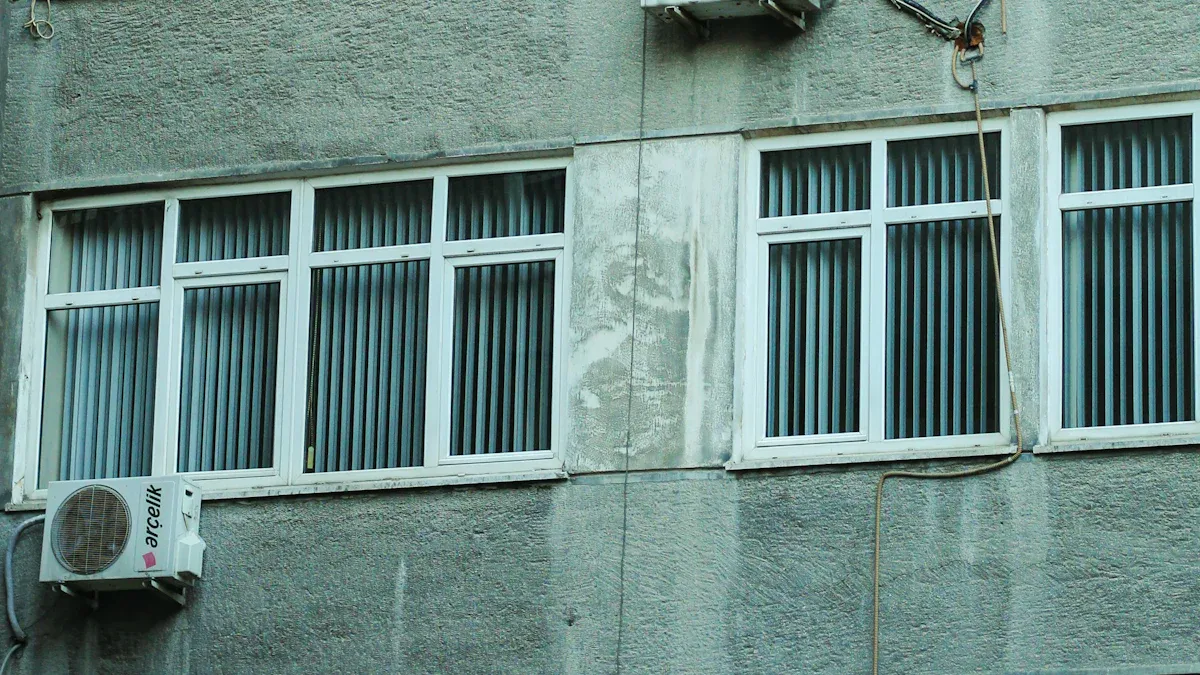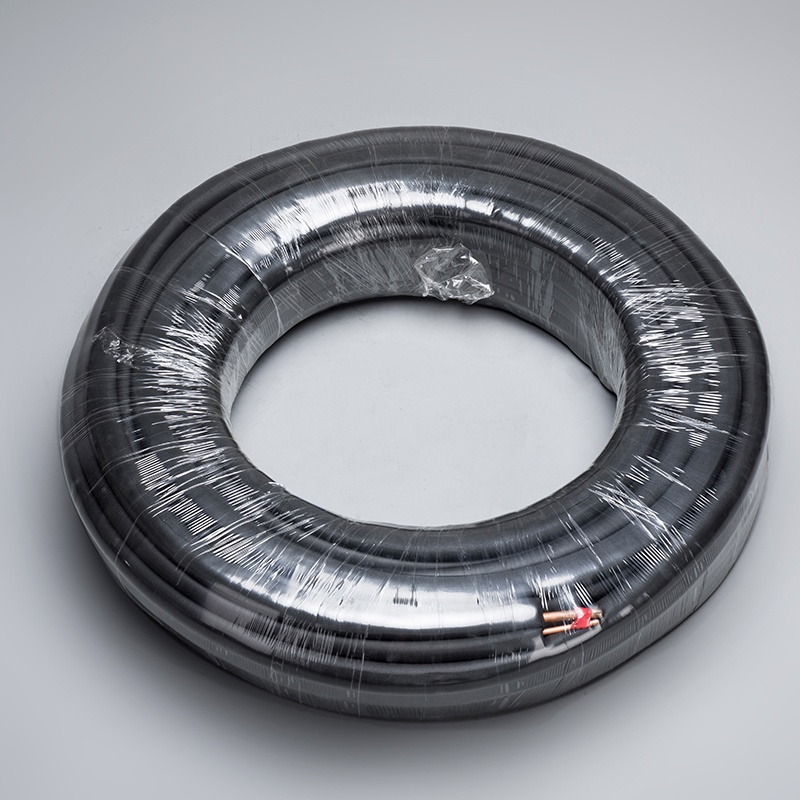Comparing Copper and Aluminum HVAC Line Sets in Russia

Choosing the best material for HVAC line sets in Russia is crucial. It ensures homes remain comfortable and HVAC systems function efficiently. Russia's harsh winters and fluctuating weather demand durable HVAC line sets that can withstand extreme conditions while maintaining performance. With urban expansion and the impacts of climate change, the need for effective temperature control is rising. As a result, the HVAC line sets market is experiencing significant growth. Globally, the HVAC line sets market is projected to increase from $8.41 billion in 2023 to $9.22 billion in 2024, reflecting a growth rate of 9.97%. This highlights the importance of reliable and energy-efficient HVAC line sets in Russia.
Key Takeaways
Copper HVAC line sets are tough and work well in cold places like Russia.
Aluminum is light and cheaper, good for saving money and easy to install.
Copper lasts longer and needs fewer fixes than aluminum.
Pick the right material for your HVAC: copper for power, aluminum for bending.
Add insulation to save energy, no matter which material you pick.
Overview of HVAC Line Sets in Russia
Copper HVAC Line Sets
Key Properties of Copper
Copper is great at moving heat quickly and efficiently. This makes it a top choice for HVAC systems. It is also very strong and lasts a long time. Copper doesn’t rust easily, even in tough conditions. Its strength helps it handle high-pressure refrigerants without breaking or leaking.
Another important feature is that copper can be recycled. Recycling copper keeps its quality the same, making it eco-friendly. This makes copper a smart and sustainable choice for HVAC line sets in Russia.
Common Uses in HVAC Systems
Copper is often used in single and multi split systems. In single split systems, it connects indoor and outdoor units for heat transfer. In multi split systems, it links many indoor units to one outdoor unit. This setup is common in big buildings or homes with many rooms.
Copper is also used in high-performance HVAC systems. It works well in very cold weather, like Russia’s winters. Copper is a favorite for systems that need to last a long time and work reliably.
Aluminum HVAC Line Sets
Key Properties of Aluminum
Aluminum is very light, which makes it easy to install. Even though it’s lightweight, it is strong and bends without breaking. This flexibility is helpful for tricky installations.
Aluminum doesn’t rust easily, but not as well as copper. To improve this, manufacturers coat aluminum to protect it. Aluminum is also cheaper than copper, making it a budget-friendly option for HVAC line sets in Russia.
Common Uses in HVAC Systems
Aluminum is used in projects where saving money is important. It’s popular in single split systems when cost is a big concern. In multi split systems, aluminum connects indoor units to an outdoor unit when weight and cost matter most.
You’ll see aluminum in systems needing lightweight and flexible setups. It works well in homes and businesses. Aluminum is a good choice for systems that don’t need to handle high pressure like copper does.
Benefits and Drawbacks of Copper and Aluminum HVAC Line Sets

Durability and Performance
Corrosion Resistance
Copper and aluminum handle rust differently. Copper creates a natural layer that stops rust, even in wet or tough weather. Aluminum also forms a protective layer but needs extra coatings to resist rust better. This makes copper stronger for long-lasting use, especially in Russia's changing weather.
Property | Copper | Aluminum |
|---|---|---|
Resistivity | 0.017 Ω x mm²/m | 0.028 Ω x mm²/m |
Heat Dissipation | Better | Weaker |
Mechanical Strength | Strong | Average |
Corrosion Resistance | Natural protection | Needs extra coating |
Performance in Extreme Temperatures
Copper works great in very cold weather. Its strength and heat-moving ability keep HVAC systems running well during Russia’s freezing winters. Aluminum is light and bends easily but doesn’t perform as well in icy conditions. For colder places, copper is more reliable and efficient.
Cost Considerations
Initial Costs
Copper line sets cost more at first than aluminum ones. This makes aluminum a good pick for cheaper projects, like small home systems. But copper’s higher price often saves money later because it lasts longer.
Maintenance and Longevity
Copper lasts longer and needs fewer repairs, saving money over time. It’s a great choice for big buildings with multi split systems. Aluminum costs less upfront but may need more fixes, raising long-term expenses. Installing copper is easier, while aluminum needs extra care, which can cost more.
Copper costs more to buy but lasts longer.
Aluminum is cheaper to start with, good for tight budgets.
Copper needs fewer repairs, saving money later.
Aluminum may cost more to install because of extra steps.
Energy Efficiency
Thermal Conductivity
Copper moves heat better than aluminum. This makes it perfect for systems where strong performance matters, like multi split setups. Aluminum doesn’t move heat as well, which can lower energy efficiency.
Impact on Energy Consumption
Copper’s heat-moving ability helps save energy, making it a smart choice for Russia’s HVAC systems. Aluminum is cheaper but uses more energy because it doesn’t handle heat as well. For saving energy, copper is the better option.
Installation and Handling
Weight and Flexibility
Think about weight and flexibility when picking HVAC line sets. Aluminum is much lighter than copper, making it easier to install. This is helpful in projects where weight matters, like single split systems. In these systems, aluminum's lightness makes connecting indoor and outdoor units simpler.
Flexibility is also important. Aluminum bends more easily than copper, which helps in tight spaces or tricky areas. This makes aluminum a good choice for multi split systems in buildings with complex designs. However, copper is stronger, which is better for systems needing to handle high-pressure refrigerants.
Ease of Installation
The material you pick affects how easy installation will be. Aluminum's light weight and flexibility make it less physically demanding to install. This is especially useful in multi split systems with many indoor units linked to one outdoor unit. Using aluminum can save time and effort in these setups.
Copper, though heavier, is easier to seal and connect during installation. Its strength means fewer problems with leaks or damage later. This makes copper a dependable choice for both single and multi split systems. If you want long-lasting performance, copper might be worth the extra weight.
Tip: Think about your HVAC system's needs and the installation site's challenges before choosing between copper and aluminum.
Suitability of HVAC Line Sets for the Russian Climate

Performance in Cold Weather
Copper’s Strength in Freezing Temperatures
Copper works very well in freezing weather. It is strong and doesn’t crack in extreme cold. This makes it a great choice for Russia’s tough winters. Copper keeps heat moving efficiently, keeping homes warm. If you need reliable heating in freezing weather, copper is a smart pick.
Aluminum’s Flexibility in Cold Weather
Aluminum is not as strong as copper but bends easily. This helps in areas with changing weather. It may need extra insulation to save energy in cold places. For milder parts of Russia, aluminum can still work well.
Regional and Environmental Factors
Urban vs. Rural HVAC Needs
Cities need smaller, efficient HVAC systems due to limited space. Aluminum is light and flexible, making it good for urban areas. In rural areas, durability matters more. Copper’s strength and long-lasting nature make it better there. Think about your location when choosing HVAC materials.
Meeting Russian Standards
Both copper and aluminum must follow Russian safety rules. Copper often goes beyond these standards because it’s so reliable. Aluminum meets the rules but might need extra coatings to last longer. Always check that your choice fits local regulations.
Insulation and Energy Efficiency
Why Insulation Matters
Insulation helps HVAC systems save energy. It stops heat from escaping, keeping systems efficient. Copper, which moves heat well, benefits from good insulation. Aluminum also needs insulation, especially in colder areas, to avoid energy loss.
Saving Energy in Cold Climates
In Russia’s cold weather, saving energy is very important. Copper holds heat well, wasting less energy in freezing conditions. Aluminum doesn’t hold heat as well but works fine with proper insulation. Picking the right material and insulation helps your HVAC system perform well.
Recommendations for Choosing the Right HVAC Line Set Material
Key Factors to Consider
Budget and Cost Constraints
Your budget is important when picking between copper and aluminum. Copper lasts longer and works better but costs more upfront. Aluminum is cheaper at first, making it good for tight budgets. For big projects, aluminum's lower cost can save money while still working well.
Specific HVAC System Requirements
The type of HVAC system you have also matters. Copper is best for systems needing high performance and energy savings. It’s great for multi split systems that need to handle tough conditions. Aluminum is better for single split systems or setups needing lightweight materials. If your system uses high-pressure refrigerants, copper is the stronger choice.
When to Choose Copper
High-Performance Systems
Copper is perfect for HVAC systems needing top performance. It moves heat well, saving energy and cutting costs. Its strength helps it handle stress and vibrations, making it reliable for multi split systems in tough places.
Feature | Description |
|---|---|
Durability | Strong insulation keeps it working for a long time. |
Anticorrosion Properties | Resists rust, lowering the chance of system problems. |
UV Resistance | Handles sunlight exposure, staying stable outdoors. |
R-Values | High R-values improve energy savings in extreme weather. |
Long-Term Durability
Copper doesn’t rust easily and is made to last. It keeps working well even in bad weather. For systems needing little maintenance and long use, copper is worth the cost. Its toughness ensures comfort and efficiency for years.
When to Choose Aluminum
Cost-Effective Solutions
Aluminum is a great choice if you want to save money. Its lower price makes it good for big projects like rural or solar-powered HVAC systems. If you need something affordable but functional, aluminum is a smart pick.
Aluminum is light, cutting transport and setup costs.
It’s great for single split systems where saving money matters.
Lightweight and Flexible Installations
Aluminum is light and bends easily, making it ideal for tight spaces. It’s great for connecting indoor and outdoor units in multi split systems. This flexibility makes installation faster and easier, perfect for tricky designs.
Tip: If you need lightweight and flexible materials, aluminum is a great choice, especially in crowded urban areas.
When picking between copper and aluminum HVAC line sets, think about their differences. Copper is strong, lasts long, and moves heat better. Aluminum is lighter, bends easily, and costs less.
Tip: Match the material to your needs. Copper is great for tough weather and high-performing systems. Aluminum is better for cheaper or lightweight setups.
Focus on durability, price, energy use, and climate needs. Your choice should fit your budget, HVAC system, and Russia's weather. Always choose what works best for your situation.
FAQ
What is the main difference between copper and aluminum HVAC line sets?
Copper is stronger, transfers heat better, and handles tough weather. Aluminum is cheaper, lighter, and bends more easily. Pick based on your budget, system type, and local weather.
Which material is better for cold climates like Russia?
Copper works best in freezing weather. It stays strong and moves heat well. Aluminum can be used in warmer areas but needs extra insulation in very cold places.
Are aluminum HVAC line sets less durable than copper?
Yes, aluminum doesn’t last as long as copper. It needs coatings to stop rust. Copper is naturally strong and resists rust, making it better for harsh conditions.
How do I decide between copper and aluminum for my HVAC system?
Think about your budget, weather, and system needs. Copper is great for strong, long-lasting systems. Aluminum is good if you want a cheaper, lightweight option for simple setups.
Does insulation improve the performance of HVAC line sets?
Yes, insulation stops heat loss and boosts efficiency. Both copper and aluminum need insulation, especially in cold areas. It helps your HVAC system save energy and work better.


